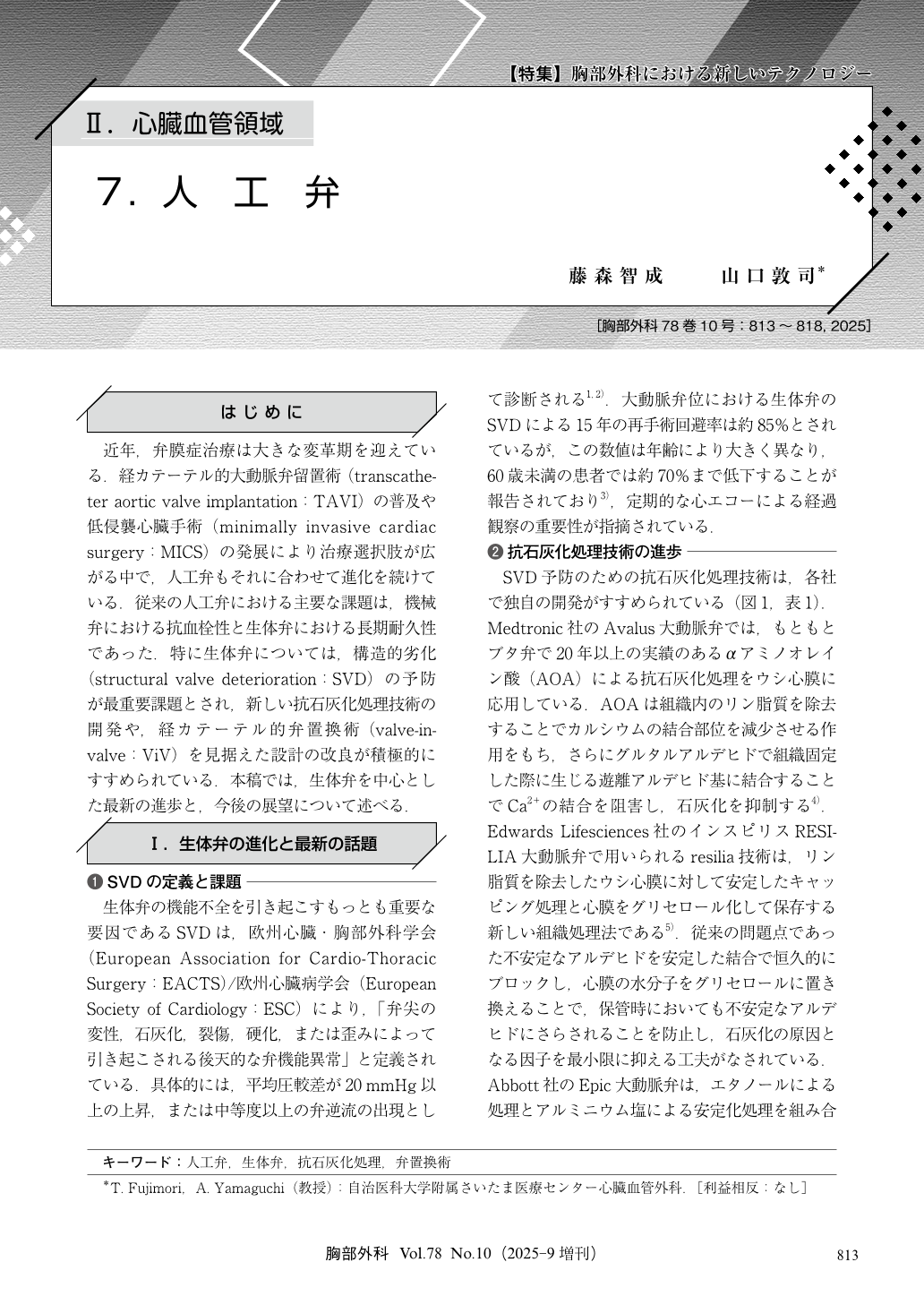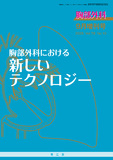Japanese
English
- 有料閲覧
- Abstract 文献概要
- 1ページ目 Look Inside
- 参考文献 Reference
近年,弁膜症治療は大きな変革期を迎えている.経カテーテル的大動脈弁留置術(transcatheter aortic valve implantation:TAVI)の普及や低侵襲心臓手術(minimally invasive cardiac surgery:MICS)の発展により治療選択肢が広がる中で,人工弁もそれに合わせて進化を続けている.従来の人工弁における主要な課題は,機械弁における抗血栓性と生体弁における長期耐久性であった.特に生体弁については,構造的劣化(structural valve deterioration:SVD)の予防が最重要課題とされ,新しい抗石灰化処理技術の開発や,経カテーテル的弁置換術(valve-in-valve:ViV)を見据えた設計の改良が積極的にすすめられている.本稿では,生体弁を中心とした最新の進歩と,今後の展望について述べる.
Recent years have witnessed significant advancements in prosthetic heart valves, particularly bioprosthetic valves. The main challenges for bioprosthetic valves have been structural valve deterioration (SVD) and long-term durability. This review focuses on three major innovations:anti-calcification treatments, valve-in-valve (ViV) compatible designs, and sutureless/rapid deployment valves. Modern bioprosthetic valves incorporate proprietary anti-calcification technologies that have demonstrated excellent mid-term durability in clinical trials. Valve designs increasingly consider future ViV procedures, incorporating features such as expandable bands, optimized dimensions, and enhanced radiopaque markers. Sutureless/rapid deployment valves have shown promising results with reduced operative times, particularly beneficial for minimally invasive approaches. Recent guidelines reflect these advances, with age thresholds for bioprosthetic valves decreasing. Emerging evidence suggests tissue-specific characteristics may influence valve selection. Future developments will likely focus on further enhancing durability and establishing personalized valve selection algorithms.

© Nankodo Co., Ltd., 2025


